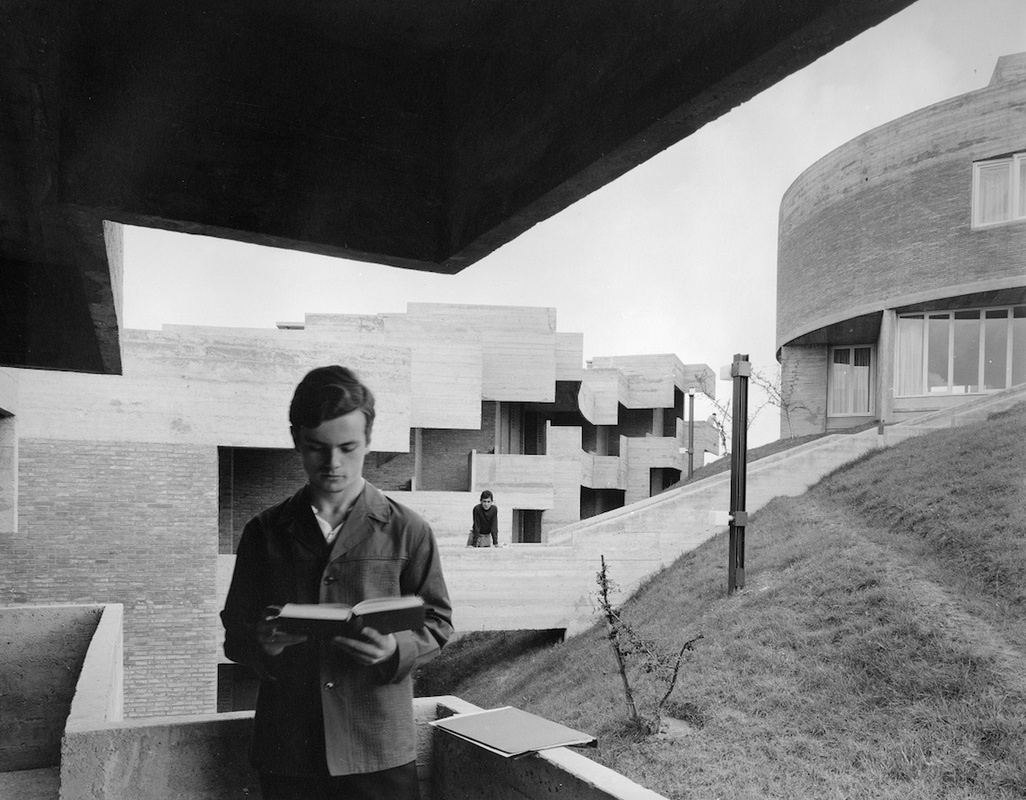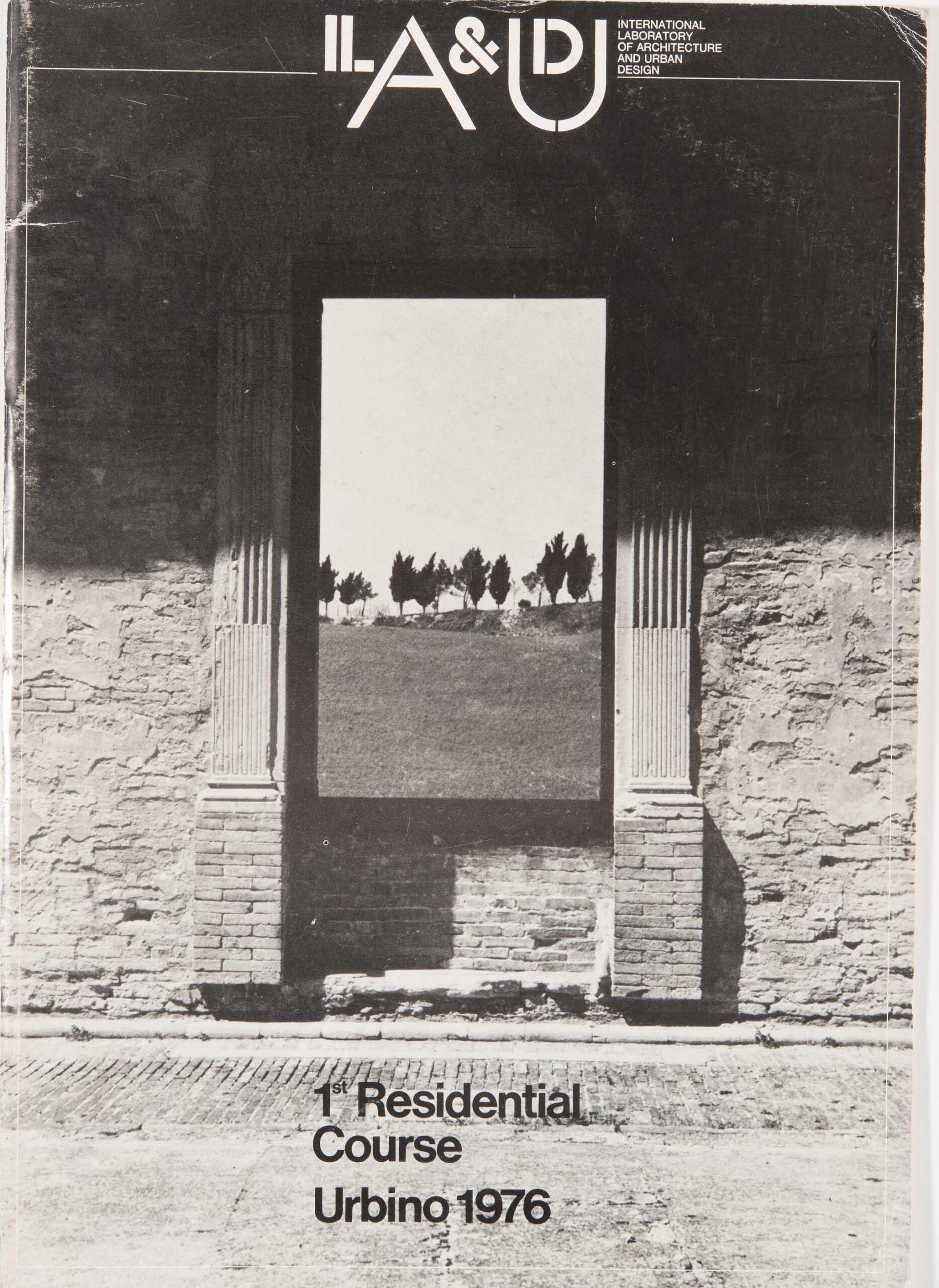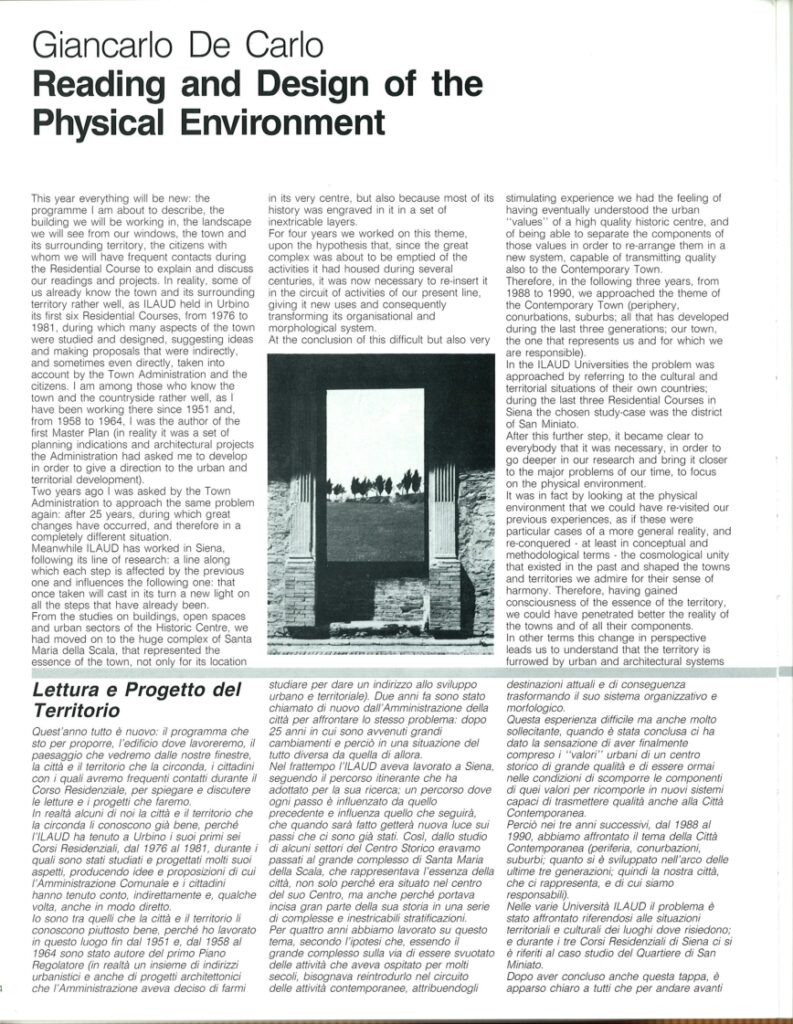


During his opening lecture of the academic year in Catania, 2003, Giancarlo De Carlo (1919-2005) stressed the importance of reading at the basis of any design process:
“Reading means exploring and understanding with a designing mind. Everything in physical space is recorded in the form of stratification of signs. Many signs are obvious, many are buried, or worn down, or so slight that they seem almost invisible. Others are hidden or have been tampered with or even falsified. But they are all present. If we are able to discover and decode every strata of signs, we can understand the essence of that which has to be retrieved. We can fathom its past and present, its strengths and weaknesses, its attitude of reluctance with respect to change, its potentialities and thus its future. Thus, we plan while we read and we plan tentatively, returning continuously to the reading in a mutual alternation with terminates in solutions which are valid for as long as the situation – intrinsic, or at the edge – lasts. The tentative project does not aim at an unequivocal solution with linear motion but moves towards multiple solutions by means of itinerant motion, passing through sequences of hypotheses and verifications which seek a path which leads to the event under observation becoming current. At the same time, they make it tentative including it to reveal its real substance, to get its stability and its imbalances to emerge, allowing us to see to what extent it can change so as to achieve new balances, without degenerating”
(Quoted in: Giancarlo De Carlo, Giancarlo De Carlo: le ragioni dell’architettura, ed. Margherita Cuccinoe and Alessandra Vittorini (Electa, 2005): 141.)
What resonates with me is that ‘reading’ was a proposed method of action to unravel an intricate web of relationships in the physical environment. The role of the designer, according to De Carlo, was to empathetically engage with the pre-existing layers of meaning and relationships and to articulate them through the activity of drawing. Unlike a classic design process of fine-tuning from the particular to the general and vice versa, De Carlo’s design pedagogy stimulated drawing as a process. De Carlo retrospectively used the notion ‘tentative design’ as a tautological construction, thus indicating an activity which can proceed without closure, not aimed at an “unequivocal solution with linear motion but moving towards multiple solutions by means of itinerant motion, passing through sequences of hypotheses and verifications.”
I feel that the tool of reading could enable a more empathetic attitude in today’s design education. Empathy, as Sarah Robinson noted, is the capacity to “perceive the experience of others through the tissue of our own bodies – regardless of whether those others are persons, creatures, places or things – is a dynamic pattern of relationship that extends our awareness of the multi-layered emotional latency inhering in the situation. Empathy expands the domain of the personal to encompass the felt experience of the other”. (Sarah Robinson, “Boundaries of Skin: John Dewey, Didier Anzieu and Architectural Possibility,” in Architecture and Empathy (Espoo, Finland: Tapio Wirkkala—Rut Bryk Foundation, 2015: 48.) As a pedagogical tool, reading could stimulate a gentler and contextually responsive design. It can be used as an exercise in recognising cultural and historical diversity and in identifying the intangible values of urban forms in the city’s text. There is no writing before reading in architectural practice.
As a researcher, I have always been interested in the intersections between intellectual history of architecture, visual studies and pedagogy. I am currently working on a research project entitled “Pedagogical Tools and Design Strategies for Urban Regeneration. International Laboratory for Architecture & Urban Design (1976–2015)”. The tool of ‘reading’ the city was central at the International Laboratory of Architecture and Urban Design (ILAUD), established in 1976 by De Carlo. This educational laboratory invited students and acclaimed practitioners from different universities to rethink the built environment. During ILAUD’s formative years, the physical and social environment of Urbino functioned as a frame of reference: all participants developed strategies for urban interventions, based on a thorough understanding – or reading – of the marks left by social, historical and topographical transformations on the physical space.
(Some of the reflections in this text were previously published in ‘Reading the City by Drawing. Tentative design as an educational tool for urban regeneration in the 1977 ILAUD summer course’ in OASE #107, and ‘Architects Who Read, ILAUD, and Reading as Direct Experience’ in The Hybrid Practitioner – Building, Teaching, Researching Architecture, edited by Caroline Voet, Eireen Schreurs, and Helen Thomas)